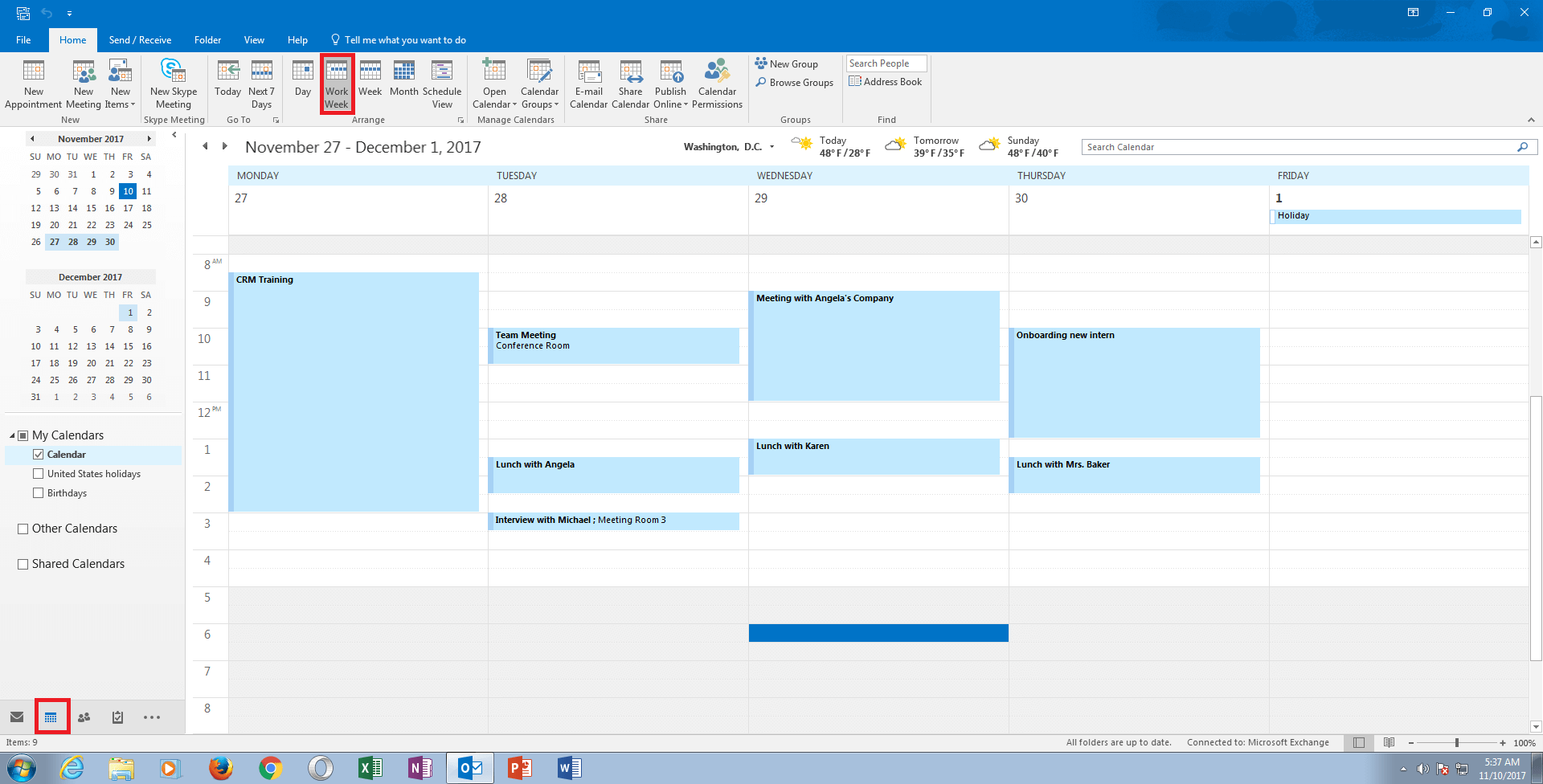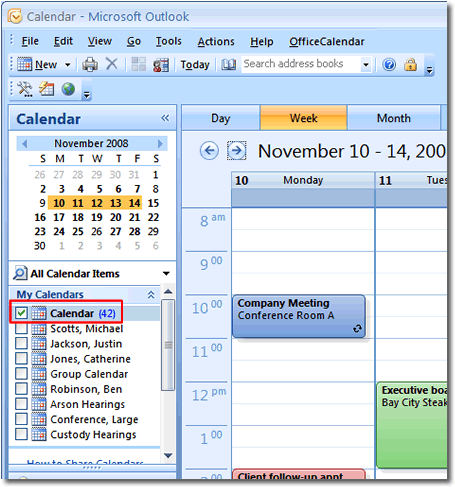

For more information, see Outlook solutions. The Inspector parameter is an Inspector object, which represents the Inspector window of the new mail message. The Inspector parameter of the event handler for the NewInspector event. The Application field returns an Application object, which represents the current instance of Outlook. The Application field of the ThisAddIn class.
OUTLOOK CALENDAR TUTORIAL CODE
To modify each new mail message, the previous code examples use the following objects: MailItem.Body = "This text was added by using code" MailItem.Subject = "This text was added by using code" Private Sub inspectors_NewInspector(ByVal Inspector As .Inspector) Handles inspectors.NewInspectorĭim mailItem As Outlook.MailItem = Tr圜ast(Inspector.CurrentItem, Outlook.MailItem) Outlook.MailItem mailItem = Inspector.CurrentItem as Outlook.MailItem Void Inspectors_NewInspector(.Inspector Inspector)


This reference prevents the garbage collector from freeing the memory that contains the event handler for the NewInspector event.
OUTLOOK CALENDAR TUTORIAL WINDOWS
The inspectors field maintains a reference to the collection of Inspector windows in the current Outlook instance. In the ThisAddIn code file, declare a field named inspectors in the ThisAddIn class. To add text to the subject and body of each new mail message For more information, see Events in Office projects. Use these event handlers to initialize your VSTO Add-in when it is loaded, and to clean up resources used by your VSTO Add-in when it is unloaded. These event handlers are called when Outlook loads and unloads your VSTO Add-in. The ThisAddIn_Startup and ThisAddIn_Shutdown event handlers. The remainder of the ThisAddIn class is defined in a hidden code file that you should not modify. For more information, see Program VSTO Add-ins. This class provides an entry point for your code and provides access to the object model of Outlook. By default, the ThisAddIn code file contains the following generated code:Ī partial definition of the ThisAddIn class. The new code uses the object model of Outlook to add text to each new mail message. Next, add code to the ThisAddIn code file. Write code that adds text to each new mail message Visual Studio creates the FirstOutlookAddIn project and opens the ThisAddIn code file in the editor. In the list of project templates, choose an Outlook VSTO Add-in project. Under the expanded Office/SharePoint node, select the Office Add-ins node. In the templates pane, expand Visual C# or Visual Basic, and then expand Office/SharePoint. On the File menu, point to New, and then click Project. For more information, see Configure a computer to develop Office solutions.Ĭreate the project To create a new Outlook project in Visual Studio You need the following components to complete this walkthrough:Īn edition of Visual Studio that includes the Microsoft Office developer tools. For more information, see Personalize the IDE. The Visual Studio edition that you have and the settings that you use determine these elements. Your computer might show different names or locations for some of the Visual Studio user interface elements in the following instructions.


 0 kommentar(er)
0 kommentar(er)
